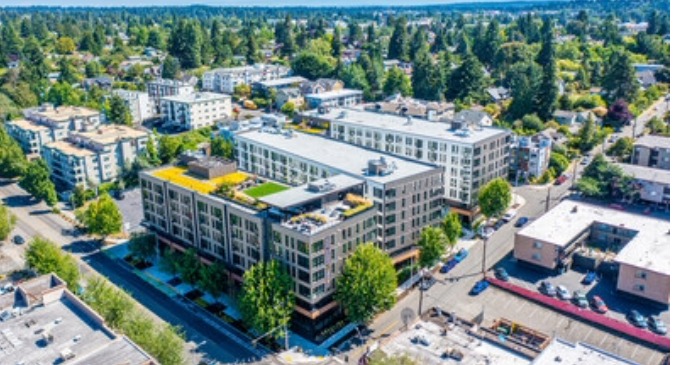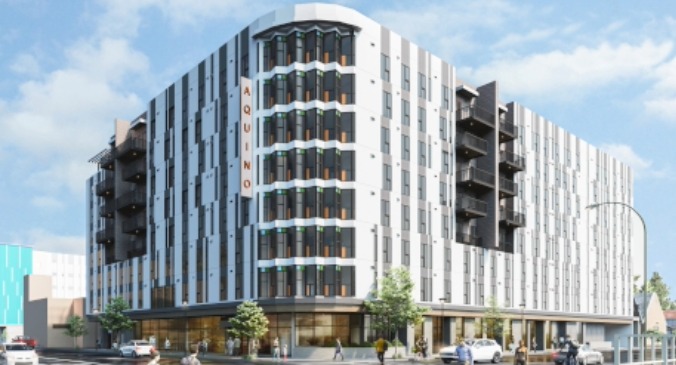In 1996, the Department of Defense (DoD) created a program to move the ownership and management of housing for service personnel to private companies as part of a Public-Private Venture (PPV) program. The idea was that private companies who specialize in the business of providing housing could do a better job of it than could the military whose primary expertise lies elsewhere. The PPV partner responsible for Air Force housing at Joint Base Langley-Eustis is Hunt Military Communities, a division of Hunt Companies headquartered in El Paso, Texas.
Traditionally, the rent that service members paid for military housing included utilities. This often resulted in much higher energy usage in military housing when compared to private off-base housing where the residents were responsible for paying for their consumption. Private companies taking over the management of military housing found that “a significant percentage of operating budgets went toward paying for utility costs,” said Julia Blest, Energy Manager at Hunt Military Communities. This was especially true for locations in areas with high costs for electricity and gas such as California and Hawaii.

Military implements conservation
A desire to promote conservation caused the Department of Defense to roll out resident energy conservation programs to military housing starting in 2011. The programs had different names for the different service branches, but they are all focused on measuring the consumption of individual residences using submeters. While service members’ housing allowances still covered the average utility bill, service members became responsible for excess usage. The program works like this:
The housing within a military residential community is sorted into groups of similar residences. These residences are approximately the same size, have the same number of stories and have comparable energy efficiency features, such as similar levels of insulation or appliance efficiency.
At the end of each month, the utility consumption data from all of these residences are collected. The highest and lowest users are dropped out and an average of the remaining residences is calculated.
Residents are billed for energy consumption above the average but receive credits if their energy usage is below the average.
The payments and credits in any given month tend to nearly balance each other out for the community as a whole.
The way utility billing is handled in military housing helps to address the “split incentive” problem with implementing conservation measures within rental housing. That is: in the private sector, the owner/manager of the property bears the cost of funding improvements targeted at reducing energy use, but the residents receive most of the benefit of the improvements since they pay the utility bills. In the military housing utility billing system, the residents have an incentive to conserve since their energy usage impacts their monthly out-of-pocket costs. The property manager also has an incentive to improve conservation on his property since he is accountable for the average energy usage for each housing unit on the property he manages.
When a military housing property manager reduces the utility spending on his property, it impacts the financial bottom line in a less direct manner than it would in the private sector. Rather than pocketing the savings, the property manager is required to re-invest the money saved into the property. This allows the property manager to improve the community’s facilities or to enhance maintenance, resulting in improved resident satisfaction.
Since service members are free to apply their basic allowance for housing toward private sector housing, having nicer facilities allows the military housing property manager to better compete for residents. So does having a more green community.
“We are seeing a number of residents who are more energy conscious,” said Blest. “Residents ask us what kind of energy improvements are in the homes.”
At Langley, some of the on-base housing consisted of older residences and Hunt saw an opportunity to address two issues: maintenance and conservation. “A lot of the lighting was aging; we were starting to see an increase in the work orders for lighting repairs,” said Blest. “We were spending a lot of money to fix ballasts and broken fixtures.” At the same time, Hunt recognized that much of the lighting being used was inefficient incandescent bulbs. Hunt chose to address both issues by retrofitting the lighting to LED.

Pay through savings
In general, Hunt finances retrofit projects using a “pay through savings” model. Hunt calculates the amount of savings that can be achieved when the project is fully implemented and then works with a partner who will spread out the cost of the project so that the monthly savings exceeds the monthly cost. In this way, Hunt sees positive cash flow from day 1.
Getting an accurate estimate of the savings potential of efficiency retrofits can be difficult but Hunt accounts for this by making sure that there is a safety margin between the estimated cost savings and the quoted cost of the retrofit. Hunt also rolls out projects in phases so they can assess the accuracy of their savings model before the whole project is completed.
For the Langley LED lighting project, Hunt is working with Utility Revenue Services (URS), a Dublin, Ohio based energy management company. URS is handling the design, procurement and installation of the LED lights and structured the deal as a four year lease with a $1 buyout at the end. Lighting both inside and outside the residences, including street lighting, is being converted to LED as part of the project
The conversion process started in June and is expected to be completed in November. URS will be responsible for warranty returns for any of the lighting products that fail during the term of the deal. However, failures are expected to be low since a key selling point for LED lighting is that it has much higher reliability and a longer lifetime than the lighting being replaced.
“What we see in all of our projects is that the service managers are the guys who are grinning from ear to ear because now they don’t have to replace the lights as often, hopefully for 7 years, or even 20 years for street lights,” said Tom Spangler, executive VP for LED at URS. “The maintenance guy at Langley told us that he’s hoping with this project that he will be able to spend time on additional preventative maintenance activities rather than on time consuming ballast and light replacement work orders.”
Beyond reduced operating and maintenance cost savings, Blest sees other benefits for LED lighting. “LED lighting helps with safety and security in the neighborhood. A lot of times, the LED lights are a lot brighter than whatever we are replacing so the streets are more illuminated, the homes are more illuminated,” she said. “There are a lot of studies that have been done showing that LED lighting is safer, especially when you are replacing fluorescents. Some of those might have chemicals that could be introduced to the home and LEDs eliminate that. They don’t put off as much heat as incandescent or even CFL bulbs, so they help reduce some of the heat load on the home as well.”

Nellis AFB
Another “pay through savings” project Hunt initiated was a water conservation project at Nellis AFB in Nevada. The program there replaced the shower heads, faucet aerators and toilet flapper valves and resulted in a 24 percent reduction in water consumption. Hunt’s partner in that program was Minol USA, the Addison, Texas based arm of the Minol-Zenner Group, which is headquartered in Germany. In general, Minol focuses their water conservation program on properties older than 5 years with more than 100 units where the owner pays for the water and where the annual water and sewer bills total more than $250. At Nellis AFB, Minol USA purchased and installed the retrofit items and was paid back in only 1.3 years out of the savings resulting from the reduction in consumption.
Some of the unique incentives and pressures associated with operating military housing motivate PPV operating partners to pay particular attention to reducing energy and water consumption. Hunt Military Communities has developed an approach to implementing conservation programs that minimizes their out-of-pocket costs while providing their residents with top-notch efficiency features.
















